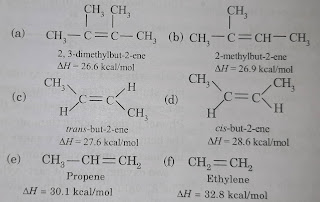Hyperconjugation chemistry
Hyperconjugation is the stabilizing interaction that results from action of the electrons in a sigma bond (usually C- H or with an adjacent empty (or partially filled) non-bonding π-Orbital or antibonding p-orbital to give an extended molecular orbital that increases the stability of the system.
Let us take the example of CH3, -CR2 in which the positively charged carbon atom has an empty p-orbital. One of the C-H bonds of the methyl group can align in the plane of this empty p-orbital and the electrons constituting the C – H bond in plane with a p-orbital can then be delocalised into the empty p-orbital.
This type of overlap stabilizes the carbocation because density from the adjacent σ bond helps in dispersing the positive charge.
Hyperconjugation is delocalisation of σ electrons. Inductive effect of alkyl groups on a saturated hydrocarbon chain follows the order
(CH3),3 C-> (CH3)2 CH-> CH3CH2>-CH3
(tertiary butyl > isopropyl > ethyl > methyl)
Whereas if an alkyl group is attached to an unsaturated system. the order of inductive effect is just reversed. This effect is called hyperconjugation effect or Baker Nathan effect. It is a permanent effect. In fact hyperconjugation is an extension of resonance. Resonance effect involves delocalization of π electrons of two or more conjugated double bonds while hyperconjugation involves delocalization of σ electrons. Hyperconjugation can be described as “double bond – no bond resonance”.
Thus, when the C – H bond is attached to an unsaturated carbon atom, the σ -electrons of the C – H bond becomes less localized by entering into partial conjugation with the attached unsaturated system. i. e σ, π conjugation.
This type of conjugation between the σ electron of single bond and π electron of multiple bond is known as hyperconjugation it is permanent effect which stabilizes the molecules.





